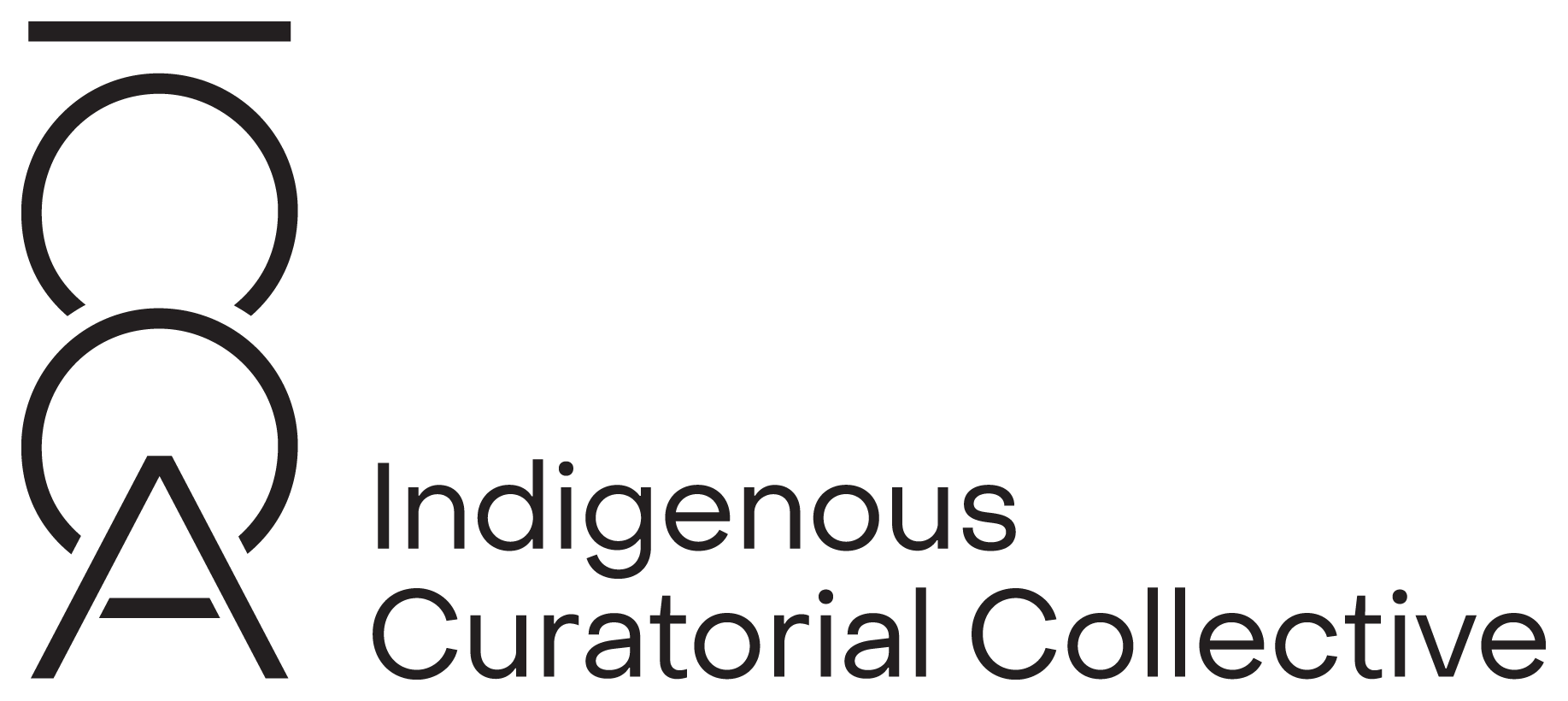Rebecca Belmore’s Performance of Photography
By Amber-Dawn Bear Robe
“But I–already an object, I do not struggle. I foresee that I shall have to wake from this bad dream even more uncomfortably; for what society makes of my photograph, what it reads there, I do not know….but when I discover myself in the product of this operation, what I see is that I have become Total Image, which is to say, Death in person; others–the Other….they turn me, ferociously, into an object, they put me at their mercy, at their disposal, classified in a file, ready for the subtlest deceptions…”(Barthes 1981, 14).
The above excerpt, from Camera Lucida, is Roland Barthes’ experience of being photographed. In his quest to identify photography in itself, his logic finds that he himself becomes the object while the photographer attempts to keep the “subject” looking “life-like.” The subject or spectacle being photographed, he states, slips into becoming pure object, and experiences a “micro-version of death” (Barthes 1981, 14).
First Nations, Métis, Inuit and Native Americans have a unique relationship with photography. Historically, many Indigenous people have avoided being photographed, thinking it may cause illness or weaken the soul, and this “superstition” has often been ridiculed by non-Native people (Hoelscher 2008). Yet, symbolically this weakening is precisely what occurred when the camera was first used to document Native peoples of North America. Photography in the hands of colonizers and missionaries was used as an oppressive tool to assimilate, objectify, and control Native North Americans while leaving a negative legacy for succeeding Indigenous generations. This photographic objectification of Aboriginal cultures and people is a relationship explored and critiqued by many contemporary Native artists such as Canadian, Anishinaabe (Ojibwa) artist, Rebecca Belmore.(1)
Belmore is internationally recognized for her performance work, particularly after being the first Aboriginal woman chosen to represent Canada at the 2005 Venice Bienniale. The work she created for the Biennial, Fountain, is a video installation that projects a narrative onto a water screen. Recently, she was featured in a solo exhibition at the Vancouver Art Gallery, summer 2008, titled Rebecca Belmore: Rising to the Occasion. A majority of her photos result from the documentation of her performances. In this essay I will examine a selected body of Belmore’s photographs that are not performance documentations. My intent is to demonstrate how her use of the medium of photography contributes to reclaiming it as a positive device for herself and representations of Native North Americans. Photography, once used as a tool of colonial oppression, becomes in Belmore’s work a forum for liberation and self-representation. My central purpose is to examine three examples of her work in the discourse of photography from a First Nations woman’s perspective.
Photography intertwined Indigenous people with tourism and consequently turned the “Indian” into a staple of American and Canadian popular culture and national identity.(2) The earliest photos taken of non-Europeans were taken by anthropologists whose goal was to mark physical and cultural characteristics that could be used as evidence to document human evolution (Maxwell 1999, 38). Photography was therefore used to enforce European superiority (intellectual and moral), reinforce racial theories and stereotypes, and support European expansion (Maxwell 1999, 9). This process assumed that people’s differences were encoded on the visual surface with skin color, also known as anthropometry (Maxwell 1999, 39).
In addition, the advent of photography and its early practitioners such as William Henry Jackson, H.H. Bennett and Edward Curtis hastened to convey an idealized and romantic representation of the savage or stoic and “vanishing Indian” to the larger public (Hoelscher 2008). The name and idea of the Indian is a European construction; “Indians” did not exist until European contact with the Americas. These stereotypes have proven pervasive throughout the centuries. Historian Dr. Elizabeth S. Bird writes “It seems White culture cannot let go of its ingrained images of American Indians” (Bird 1998, 257). Native American historian and activist, Vine Deloria, Jr., states “[e]veryone loves the Edward Curtis Indians” (Deloria, Jr., 1982, 11).
In the Edward Curtis photo, Hopi Women (figure 1), the dress and hairstyles of the four Hopi women seemingly grinding corn would likely have been seen only in a ceremonial or performative setting. Yet, without historic information or contextualization, the viewer is made to believe that these women ground corn in full ceremonial dress. In contrast to the photo, corn grinding is a laborious process that takes several hours, sometimes days. More precisely, the Curtis photo is an unrealistic situation made to appear as a document of Pueblo life.
Because the technological apparatus of the camera is generally never brought to the viewer’s attention, it does not obviously stand between what the viewer sees in the photo and the captured image. The camera and photograph presents false impressions that fulfill the fantasy of witnessing reality; truth is soured with manipulation. Scenes are contrived to construct images of Indigenous peoples in strategically dressed and posed scenes in order to invent an “authentic Indian” that masks any traces of western influence or dress (Maxwell 1999, 111). Photographers such as Curtis consigned the “Indian” to the “eternal world of commercial art” as Curtis’s photos became foundational in the commercial world of western, Native and tourist shops and galleries (Maxwell 1999, 113) (figure 2,3).
For Barthes, “photography transformed subject into object, and even, one might say, into a museum object” (Barthes 1981, 13). Colonial photography and the scientific gaze left North America with a multitude of images and objects cased in museums and archives. Ethnographers and anthropologists implied that they saved the “vanishing Indians” by placing their photographic images in museums. However, photography, once dominated by colonial and western powers, becomes in Rebecca Belmore’s art, a forum for liberation and self-representation. In her works, Belmore uses the medium of photography to represent constriction and binding of the Aboriginal female body, and transforms this experience into one of growth, renewal, rebirth and regeneration. The artist releases the figure from a suffocating ideology.
The female body, usually her own, is the main theme of Belmore’s work. The artist explained this as the intersection of various identities that merge together and are then expressed with her body. According to the artist, her body reveals how power relations and history shape and affect these identities (Watson 2005, 28). The photo, White Thread (figure 4), is a large color inkjet on watercolor paper. The central image is a human female body wrapped in red strips of cloth, to the extent that only the hair, hands and feet are exposed.(3) The body is doubled over; she bends forward and down with her right foot resting lightly on her left foot. The cloth binds her legs, resulting in the body forming an oval shape. The red ribbon material has a white thread stitched horizontally through the length of the fabric. All bodily orifices are covered and her long dark brown/black hair hangs out from the textile to form a shape resembling an inverted paint brush. Shadows are cast from the body onto the surrounding background to reveal a slightly raised platform that the figure is standing on. The red cloth and black hair sharply contrast with the stark white surroundings.
The image appeals to the viewer initially as an aesthetically pleasing composition, but a closer look reveals the figure to be in a claustrophobic and frightening position, and seemingly at the mercy of the photographer. The living mummified body enclosed in the steeped red strips of cloth symbolize the trauma of blood and violence and adds tension and emotion to the image. Loosening the figure from the material would require a shared and intimate experience, transforming the object into a human. The body wears a cast, motionless like a broken arm, signifying a breaking/healing process. Belmore has described White Thread as a response to world events, specifically the war in Iraq; world events which affect everyone including the environment and global politics. The photo comments on western intrusion, who continues to enforce its values onto other cultures resulting in continuing the objectifying machine that perpetuates misinformation, stereotypes and ignorance towards others. This is a history familiar to Aboriginal people, the image is about the struggle to survive and resist.
Native North Americans’ initial introduction to photography was as the continuous subject of the camera’s gaze and being constantly objectified, in other words, the process of spectacle which supported European expansion and worked to “naturalize” the classic story and image of the “Indian” into the North American psyche.(4) Images were used as means to justify expulsion and extermination of Native North Americans, used as propaganda material, and to document Native child assimilation into the western education system. The most popular example, “before and after” photos, was a common method used in residential and boarding schools in which photographers manipulated negatives and exposures to present the child in the “before” image with darker skin tones and the same child in the “after” photo with lighter skin tones (figure 5).
“Before” photos highlighted the Indigenous traits, such as long hair and traditional clothing alongside “after” photos illustrating the students’ transformation by highlighting civilized traits such as short, combed hair, European dress and props signifying industrialization and integration. Belmore has documented her own recreation of before and after photos. Belmore created a triptych photo series Untitled, which consists of three large inkjet prints on watercolor paper (figure 6). Like White Thread, a woman is the central focus of each image. The figure is attached to a white wall and caught mid process of wrapping herself in white fabric. A coil of fabric hangs below her torso and lays tightly twisted on a grey and cement-looking floor. Her body casts slight shadows onto the white wall to which she is adhered.
In the central photo of the triptych, the body has been completely wrapped in the white material with the figure hanging upside down. A strand of twisted cloth suspends her to the unseen ceiling. The woman’s head and upper shoulders rest on the cement floor; her hair is sprawled around her creating an organic fiery shape.
In the final image of the triptych, the woman’s body is suspended onto the wall again, but now completely wrapped except for the head and feet. Her eyes are closed and her face is directed past the viewer or photographer. The fabric encasing her is not taunt and revealing of her figure, but is instead more cocoon shaped. Hair cascades down around and past where her shoulders are bound and she seems at peace.
The women in Belmore’s triptych series of photos resist the controlling gaze. None of them look at the viewer; all refuse to acknowledge, accept or adhere to the rules of the gaze. Statistically and historically, people of color or people who are culturally defined as weak by the West, such as woman, or those without technology and who are tribal or poor, face the camera straight on (Lutz and Collins 2003, 360). Belmore refuses to represent an exotic spectacle or a National Geographic subject, an ethnographic object, or an Edward Curtis prairie princess.
Compared to the form in White Thread, the fabric encasing the woman in Untitled is not taut and suffocating, but is instead more papoose-shaped and she seems at peace. Even though the female figure is bound, it appears to have transformed from the constricted figure in White Thread. Now, a sense of relaxation and serenity is emitted from the insulated woman. Confinement and restriction, before symbolized by the red fabric, is replaced with the protection and nurturance of a cocoon shelter. The color change of the material symbolizes a change and adaptation to western civilization while the internal being remains strong and true to self. The “before and after” photos, in Belmore’s work, are controlled and lead with an Indigenous vision. Her face is free allowing her to breathe. The red of violence and trauma is now gone, along with the figure straining to be in a fetal shape, a position she was desperately trying to achieve in White Thread. Untitled demonstrates a process of cleansing and healing; the body has found its way into a safe and nurturing form of the womb. The white fabric of protection and healing can be seen as a meeting of all colors into a sense of unity, or an anticipation of the colors yet to come with a new beginning. This series symbolizes an opportunity for a new narrative, a new history, a new direction of life that will encompass the female Aboriginal form, body and spirit of the woman who is in control of her identity and representation.
The colors red and white frequently appear in Belmore’s work, two hues that reflect binary opposites like: white/red, good/evil, European/Indian, noble/ ignoble, and civility/savagery. Red is also a central theme referring to blood. The blood previously shed from genocide and colonialism now suggests a healing, a release, a cleansing; Native blood and woman’s blood. Belmore has previously worn and shed a red garment in her performance called The Named and Unnamed.(5) This blood letting and healing-wound process on the female body can be seen taking place in the final and most recent photo I will be examining, titled Fringe.
Fringe (figure 7), a life-sized photograph presented as a lightbox transparency, situates the female form in the center of the composition, but now no longer bound or insulated with material. Without restraint, the woman lays horizontally on her side on a layer of white fabric, while her head rests on a white pillow that aligns her head and neck to her spine. There is little space around her; she consumes the majority of the photograph. The wall color is reversed compared to the first two photographs discussed. It is now gray and the ground is white. Her back is towards the camera; she faces away from the viewer with her averted gaze opposing an objectifying historical “straight-on,” anthropological, or commodified “Curtis” gaze. Her right arm on her side and hand resting on her hip and the left arm can not be seen in the image. Her legs are bent towards her in a fetal like position with the upper leg lying slightly lower on her bottom leg. She is naked except for a white ribbed cloth, the same cloth that lines the head pillow, covering her hips and buttocks to below her knees.
Compared to the long tresses of the woman in the first two series, the woman’s hair is now short, sitting just above the neck and below the ears, with a patch of blond highlighted strands showing through the dark brown body of hair. Another transformation unveils the unwrapped body showing the women’s skin, form and back that is lacerated with a roughly sutured, diagonal gash. The slash is from the top right shoulder towards the buttocks, ending somewhere underneath the white draping of fabric. The dripping blood forms a red fringe that is mimicked by white suturing thread.(6) The wound has not been neatly or cleanly mended; it is a wound meant to be seen with exaggerated stitches that will forever leave their mark.(7)
In looking at the three photo works, the red cloth changes to white, the female form emerged from being bound inside material, to lying upon it. The red cloth becomes blood being purged from the body seeping from the fresh wound on her back; stitches suggesting a healing with time. A deep scar will remain, but eventually the wound will cease weeping blood. The wound and physical injury can be seen as integral to the healing process from the effects of colonialism and harmful representations of Native North Americans.
The costume made the “Indian” for photographers like Curtis. The half-naked or fully naked body made the costume for the ethnologist/anthropologist and European clothing enforced by government and school officials was the imposed costume for Native children. Belmore transforms and removes the costumes to expose the binding of the social uniform and shackles of expectations for either being a woman, First Nations, or other expectations placed on the female and Native body. Belmore prevents the subject or spectacle from slipping into being pure object and an image of death. She gives a contemporary account of her relationship to photography and ultimately reclaims control of her own female and Native identity.
Barthes, who struggled with what society made of his photograph, discovered himself being a product, an object of death in a person; feeling at society’s mercy and disposal. While he describes a theoretical process and end product of photography, the photograph represents a real traumatic history and tool intentionally used to exploit and destroy Native North Americans. Belmore expresses this negative experience endured by Native North Americans. With her use of photography she transforms the medium into a process of reclaiming control, leadership, vision, healing and strengthening from a First Nations perspective.
NOTES
1. Belmore was born March 22, 1960 in Upsala Ontario, Canada and currently resides in Vancouver, British Columbia, Canada.
2. In this essay the term Indian, Indianess or pan-Indian refers to the derogatory use of the term and its connection to stereotypes, power relations, colonialism and racism.
3. The woman used in Belmore’s photo work discussed in this essay are hired models, none are of the artist herself.
4. “Naturalization” and power relations, according to theorists such as Roland Barthes, Jacques Derrida and Kaja Silverman are hidden in the signs and significations of language. The English and French language was forced upon Native North Americans. Language control was another tool used to eradicate and assimilate Native North Americans into western and “civilized” society.
5. The Named and the Unnamed by Belmore includes sculpture, photography, and video installation. The work addresses the murders of more than seventy women who lived in the streets of Vancouver’s Downtown Eastside. Many people were outraged because authorities ignored the severity of the situation because the majority of the women were First Nations woman, drug users and prostitutes. A number of female bodies were found dismembered on a Port Coquitlam pig farm located east of Vancouver (Rickard 2005). A serial killer, charged with the murders, was sentenced to life in prison. Families of the murdered women were finally given an opportunity to have closure and mourn for the traumatic ending; murder, abuse and discrimination suffered by these women, a familiar ending for many Native North Americans, historically and presently.
6. Kaja Silverman used the term suturing in reference to cinematography. In films narratives are stitched together, but in a structure that hides the suturing process to gives the illusion a clean, un-spliced story. These narratives have been used to naturalize and support myths that are ingrained in the North American psyche. Silverman argues that in order to expose the illusion of truths and power relations in western society, the sutures must be made visible (Silverman 1983). The spaces between the stitches, the blank moments that create the dominant moments (binary opposites) are also valuable signifiers. The moments in between are not usually witnessed by the audience. Exposing the suture marks results in exposing the construction of the story, the myth and lies behind the image.
7. There are many other references and interpretations one can make about the slash on the woman’s back, but this is another discourse that will not be followed in this paper. The fringe can also be seen as paralleling Native beadwork and western wear, of which both are popular in contemporary Native nations.
References
Buium, Greg. “Body language: Artist Rebecca Belmore’s new Vancouver exhibition showcases her startling work.” July 2008, www.cbc.ca/arts/artdesign/story/2008/07/08/f-rebecca-belmore.html
Silverman, Kaja. The Subject of Semiotics. New York: Oxford University Press, 1983.
 Amber-Dawn Bear Robe, from Siksika Nation in Alberta, Canada, achieved an MA in American Indian Studies and a second MA degree in Art History, both from the University of Arizona. Currently, she is Assistant Faculty of Art History in the Museum Studies department at the Institute of American Indian Arts, Santa Fe, NM. Latest curatorial projects include organizing the annual Indigenous fashion show for the Southwestern Association for Indian Arts (SWAIA) and curating an exhibition for The Tweed Museum in Duluth, Minnesota titled Blood Memoirs: Exploring Individuality, Memory, and Culture through Portraiture. Previously, she was the Director/Curator of Urban Shaman: Contemporary Aboriginal Art, the largest Aboriginal artist-run center in North America.
Amber-Dawn Bear Robe, from Siksika Nation in Alberta, Canada, achieved an MA in American Indian Studies and a second MA degree in Art History, both from the University of Arizona. Currently, she is Assistant Faculty of Art History in the Museum Studies department at the Institute of American Indian Arts, Santa Fe, NM. Latest curatorial projects include organizing the annual Indigenous fashion show for the Southwestern Association for Indian Arts (SWAIA) and curating an exhibition for The Tweed Museum in Duluth, Minnesota titled Blood Memoirs: Exploring Individuality, Memory, and Culture through Portraiture. Previously, she was the Director/Curator of Urban Shaman: Contemporary Aboriginal Art, the largest Aboriginal artist-run center in North America.















